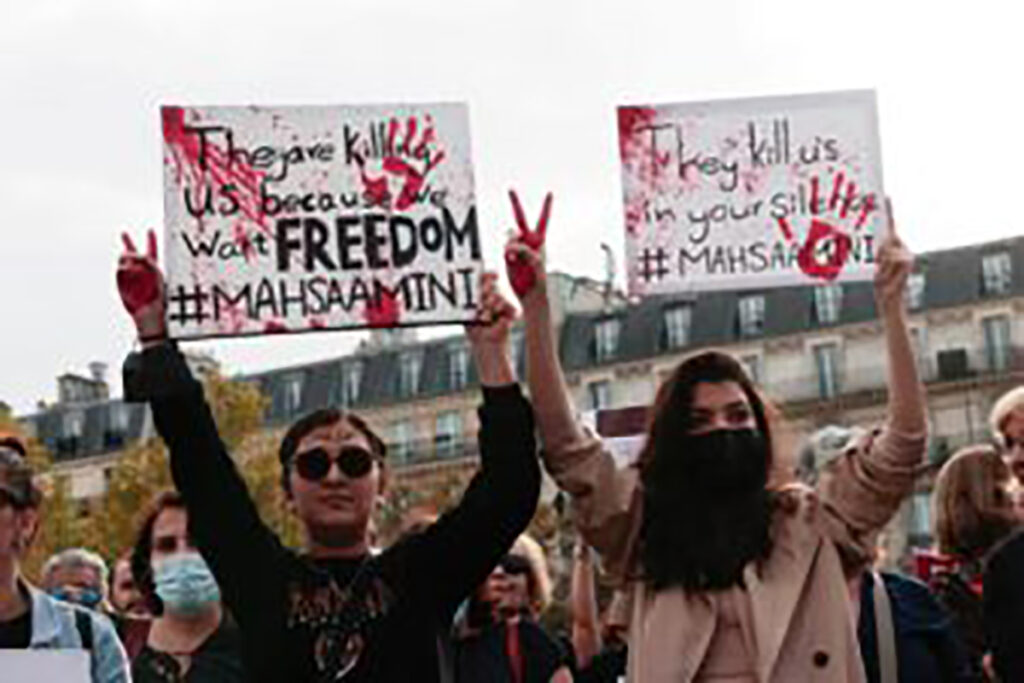The Scotsman, by Struan Stevenson
While millions around the world tune in to watch football in the World Cup 2022 in Qatar, young men and women in Iran are sacrificing their lives to restore freedom and justice to their long-suffering nation.
The situation in Iran must surely act as a wake-up call to the West. This pariah regime and its murderous trampling of human rights can no longer be tolerated. The civilized world must back the Iranian people and support their right to overthrow the mullahs’ brutal, theocratic regime.
A recent report by MI5 director-general Ken McCallum, revealing how the Iranian regime has tried to assassinate or kidnap ten people in Britain since the beginning of 2022, is the clearest sign yet of how the mullahs’ tottering grip on power has turned them into a lethal, international adversary. Mr. McCallum said: “At [Iran’s] sharpest, this includes ambitions to kidnap or even kill British or UK-based individuals perceived as enemies of the regime. We have seen at least ten such potential threats since January alone. We work at pace with domestic and international partners to disrupt this completely unacceptable activity.”
With the nationwide uprising in Iran now entering its tenth week and increasingly developing into a full-scale revolution, the fascist regime has resorted to deadly tactics at home and abroad. On-going protests in Iran have expanded to at least 243 cities, with more than 625 people killed by the repressive security forces and over 30,000 arrested. The revolt, which began in September with the murder in custody of a young Kurdish woman, Mahsa Amini, for not wearing her veil properly, has now escalated into an outpouring of hatred towards its misogynist rulers. “Death to Khamenei” has become one of the keynote chants heard during the mass demonstrations, as Iranians demand the downfall of the elderly supreme leader, Ayatollah Ali Khamenei, and his tyrannical government.
Hundreds of Iranians attending the Qatar World Cup have joined the protests, chanting “Say her name, Mahsa Amini” and wearing T-shirts with slogans like “Zan, Zindagi, Azadi” (women, life, freedom), a central chant from the protests in Iran. The Iranian football team refused to sing their country’s national anthem before the start of their match with England in the Khalifa International Stadium, in a silent show of support for the uprising.
They will now face severe retribution at the hands of the regime on their return to Iran. Meanwhile, in Iran, the insurrection has reached a new phase, with the Islamic Revolutionary Guards Corps and their thuggish Basij militia colleagues, deploying heavy weapons in a brutal crackdown against the mostly young protesters. Helicopter gunships now swoop low over the surging demonstrations, while armored military vehicles open fire with high-caliber machine guns, scything down women and men indiscriminately.
Live Ammunition
Live ammunition and tear gas have been fired into people’s homes. Doctors and nurses are even attempting to treat injured protesters in private homes, as people wounded during the protests are routinely dragged from their hospital beds and hauled off to prison. Drones film those taking part in the demonstrations and they are then arrested by the IRGC and face long terms of imprisonment, or even execution, for daring to oppose the regime.
Death sentences have been announced by the Revolutionary Court of Tehran on four people arrested during the protests: Mohammad Ghobadlou, Mohammad Boroughani, Sahand Noor Mohammadzadeh, and Mahan Sedarat Madani.
In recent days, the most intense protests have been in the north-western Kurdish-majority provinces, with videos continuing to emerge from several cities, including Mahabad, Bukan and Piranshahr in West Azerbaijan and Javanrud in Kermanshah. The regime has tried to prevent the spread of information about its brutal crackdown by blocking the internet and banning international journalists from entering Iran.
But evidence has continued to surface showing unarmed student protesters blockading streets and courageously confronting the full military might of the mullahs. Mass strikes and protests have continued in universities throughout the country, including in the capital Tehran and in Kermanshah, Sanandaj, Marvdasht, Karaj, Tabriz, Sari, Najafabad, and Yazd. The students have been joined by bazaar merchants who have gone on strike in dozens of cities, closing their shops and seriously undermining the already reeling economy.
The uprising has been carefully coordinated from day one by the main democratic opposition movement, the Mojahedin-e Khalq (MEK), which has set up resistance units in towns and cities throughout Iran. Led by the charismatic Maryam Rajavi, the president-elect of the National Council of Resistance of Iran (NCRI), from her exile in Albania, the MEK resistance units have expanded rapidly throughout the insurrection.
Posters, graffiti, handbills, and banners have highlighted direct backing for the NCRI, MEK, and Mrs. Rajavi, provoking a furious response from the mullahs who have a deep fear of this key opposition movement. However, the MEK and NCRI have continued to hack into national government TV networks, interrupting news and current affairs broadcasts at peak times, with pictures of Mrs. Rajavi and calls for the regime’s overthrow. Resistance units have used social media to highlight the millions who struggle to survive on incomes under the poverty line, against a background of uncontrollable rises in inflation, water shortages, and soaring unemployment.
Mrs. Rajavi has urged the UN Security Council and the EU and its member states to take immediate action to stop the killing of defenseless protesters, including comprehensive political and economic sanctions against the mullahs, listing the IRGC and the regime’s Ministry of Intelligence on EU terror blacklists, and the expulsion of their agents and mercenaries from their respective countries. As she rightly said, “inaction in the face of crimes against humanity and war crimes by the terrorist and warmongering regime of mullahs has not only trampled human rights values but has endangered peace and security in the region and the world”.
Struan Stevenson is the coordinator of the Campaign for Iran Change and chair of the In Search of Justice committee on the protection of political freedoms in Iran
